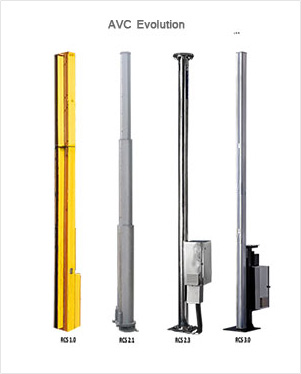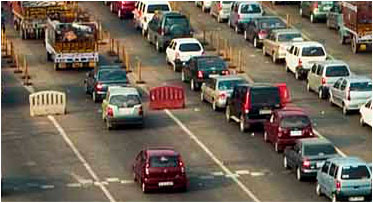For any toll management system to work correctly, it needs to accurately identify and classify vehicles in order to collect the appropriate toll amount. Rajdeep Info Techno Pvt Ltd’s (RITPL) Automatic Vehicle Classifier (AVC), also known as Rajdeep Classifier System (RCS), does precisely that. Our vehicle classifier takes into consideration shape and size of the vehicle and also factors in speed and overloading, to give an accurate and super-fast outcome.
Our AVC is a technologically advanced system of integrated devices and software applications used in toll collection. It is a high-speed, state-of-the-art electronic device with IP65 rating, that is used for vehicle identification and employs VLSI technology for lightning data-processing speed.
AVC records side profiles of vehicle for classification in our Toll Management System (TMS) and accurately and quickly distinguishes vehicle classes, as per definition.

The AVC system comprises of:
•Receiver Tower with its control panel: The Receiver Tower (RXT) along with the Receiver Control Panel (RCP) captures the side profile of the vehicle passing through the light curtain generated by the Transmitter Tower. The RXT contains an infrared receiver that sends this information to a receiver controller PCB in the RCP. The receiver controller PCB reads this data to create a data frame that is relayed to the Lane PC which then generates the side profile of the vehicle. There are other modules in the RCP, like Magnetic Loop Sensor and Local Data Storage that work in conjunction with the Incidence Detection Camera to capture the photo and store data locally.
•Transmitter Tower with its control panel: The Transmitter Tower (TXT) also contain infrared transmitters that are controlled through the circuitry in the Transmitter Control Panel (TCP). The TCP consists of transmitter controller PCB, . The TCP is powered by SMPS from RCP which gets uninterrupted power supply from the main supply panel.
•Supporting software on the lane computer: The lane computer compares and checks the classification information provided by the RCP, with the vehicle class entered by the toll collector. If there is any discrepancy between the two classifications, the information is communicated to the audit workstation for further processing by the toll supervision staff.
The classification is purely based on vehicle shape and height, irrespective of any fixed parameters. Due to variable speeds of vehicles passing through the AVC, the side profile may not get retrieved in proper symmetry, get shortened or get stretched. Taking this into consideration, the image processing component in our eliminates the speed factor or length of the vehicle – for all practical purpose, the speed of the vehicle does not affect the vehicle classification.Plus, the vehicle model database is updated every time a new type of vehicle model is passed through the towers.
Overloading is another challenge to get accurate vehicle classification in India.On Indian roads, vehicle overloading is a very common practice. Overloading makes the vehicles appear oversized, which may cause inaccurate classification. Oversized vehicles may also accidentally collide with the towers and damage them.To avoid this, we have come up with an enhancement in our existing version of AVC towers. We have designed a new Rajdeep’s AVC model – RCS 3.0 with a damage prevention mechanism to withstand accidental vehicle collision or damage to the AVC tower. The new design incorporates a mechanical actuator which gradually rotates the tower when a vehicle hits the tower, minimizing the impact of collision and restores the tower back to its position,slowly. This additional functionality is very suitable for Indian road conditions.


